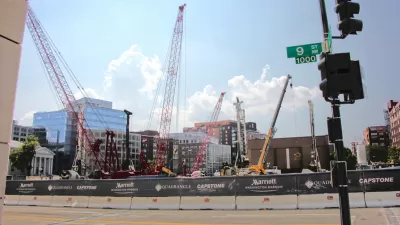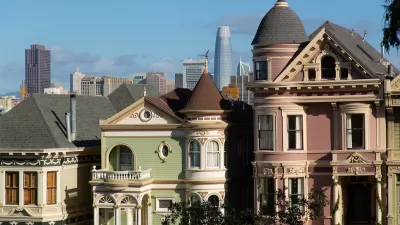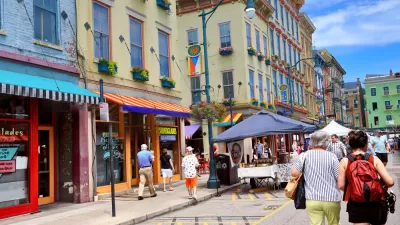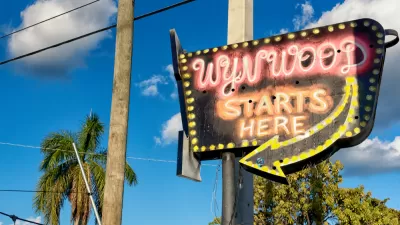Jared Green asks the billion dollar question for economic developers and planning agencies throughout the United States: is urban revitalization of neighborhoods possible without the subsequent gentrification and displacement of current residents?

Jared Green asks this important question in a recent post on the American Society of Landscape Architect's blog, The Dirt. The most recent wave of "urban revitalization" that began in the 1990s to increase wealth in cities is noted by supporters as benefiting everyone, while critics are increasingly calling these initiatives gentrification. Given these disputes, Green discusses how cities can encourage growth while still providing a sense of neighborhood continuity, and how city planning departments can accommodate forces of change while respecting local communities and culture.
Green critiques Washington D.C., citing the work of Charles Hostovsky, an urban planning professor at Catholic University. Hostovsky's work centers on the speed of revitalization in the D.C. area, “[e]very neighborhood has cranes, signifying new development. There has been a corresponding shift in the demographics of the city. In 1970, the city was 77 percent African American. Today, it’s just 49 percent... Indeed: in the past decade, approximately 50,000 young, white Millennials have moved into the city while 35,000 African Americans have left.”
These changing demographics are stark. At a recent EcoDistricts Summit in Washington D.C., Hazel Edwards, professor of planning at Catholic University, discussed successful examples of urban revitalization from around the country that maintained local culture and minimized displacement. “Edwards said the key to revitalization without gentrification is 'bringing residents and the community to the table often and at the beginning.' This kind of public planning process requires a great investment of time and resources by city governments, but without this investment, the only result may be inequitable, developer-led urban revitalization.” In Hazel's words, “cities have to form diverse, inclusive partnerships, foster openness, and collaborate on goals and outcomes.”
FULL STORY: Is Urban Revitalization Without Gentrification Possible?

Trump Administration Could Effectively End Housing Voucher Program
Federal officials are eyeing major cuts to the Section 8 program that helps millions of low-income households pay rent.

Planetizen Federal Action Tracker
A weekly monitor of how Trump’s orders and actions are impacting planners and planning in America.

The 120 Year Old Tiny Home Villages That Sheltered San Francisco’s Earthquake Refugees
More than a century ago, San Francisco mobilized to house thousands of residents displaced by the 1906 earthquake. Could their strategy offer a model for the present?

HSR Reaches Key Settlement in Northern California City
The state’s high-speed rail authority reached an agreement with Millbrae, a key city on the train’s proposed route to San Francisco.

Washington State Legislature Passes Parking Reform Bill
A bill that would limit parking requirements for new developments is headed to the governor’s desk.

Missouri Law Would Ban Protections for Housing Voucher Users
A state law seeks to overturn source-of-income discrimination bans passed by several Missouri cities.
Urban Design for Planners 1: Software Tools
This six-course series explores essential urban design concepts using open source software and equips planners with the tools they need to participate fully in the urban design process.
Planning for Universal Design
Learn the tools for implementing Universal Design in planning regulations.
Ada County Highway District
Clanton & Associates, Inc.
Jessamine County Fiscal Court
Institute for Housing and Urban Development Studies (IHS)
City of Grandview
Harvard GSD Executive Education
Toledo-Lucas County Plan Commissions
Salt Lake City
NYU Wagner Graduate School of Public Service





























